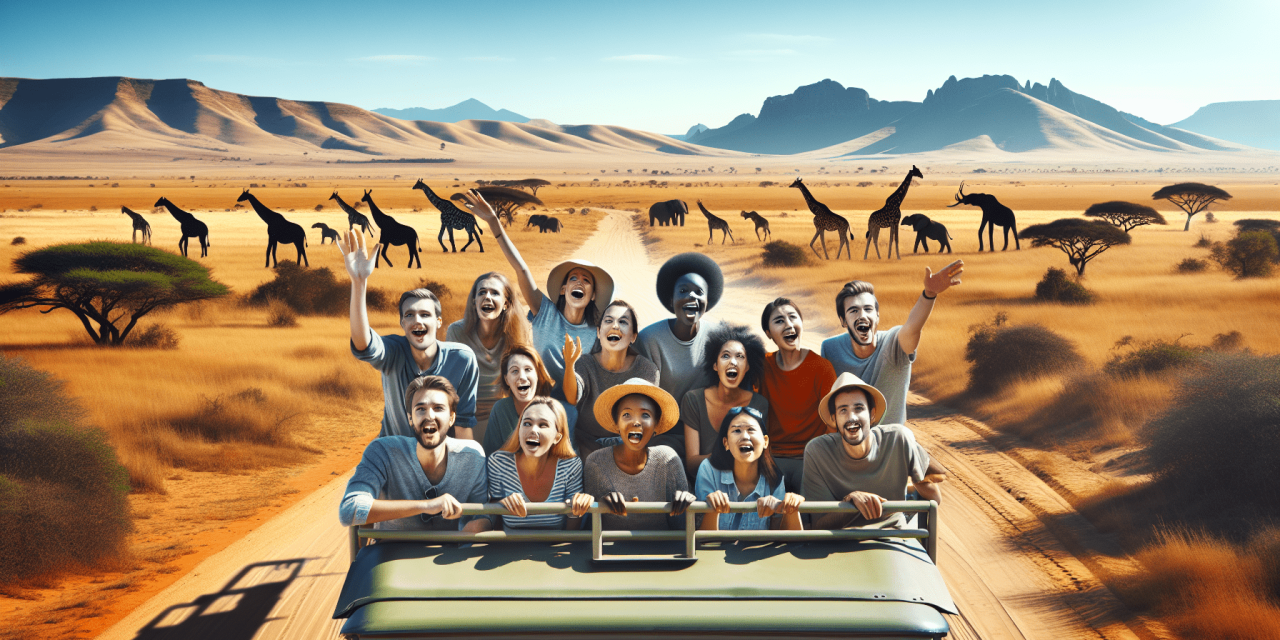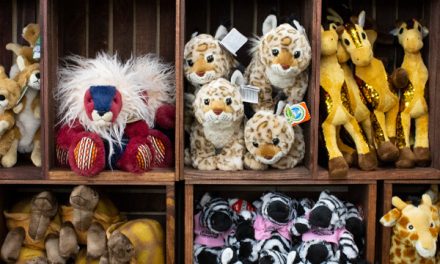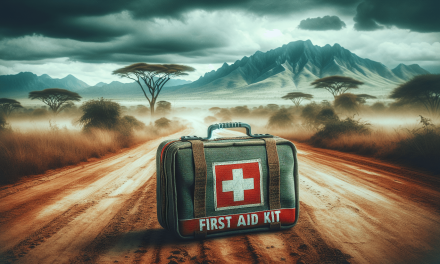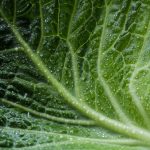So you’ve booked your African safari and you’re excited to embark on thrilling game drives, but what exactly can you expect when it comes to the vehicles? African safari vehicles come in different shapes and sizes, each designed to enhance your wildlife experience. From open-sided jeeps that provide unobstructed views to closed-top 4x4s that offer protection from the elements, this article will guide you through the various types of safari vehicles you may encounter and what to anticipate during your game drives. Get ready to learn about the vehicles that will transport you to unforgettable wildlife encounters in the heart of Africa.
Types of Safari Vehicles
Open Safari Vehicles
Open safari vehicles are a popular choice for many safari enthusiasts. These vehicles are typically 4×4 trucks or SUVs that have been modified to accommodate safari tours. The most notable feature of open safari vehicles is their open-top design, which allows for an unobstructed view of the surrounding landscape and wildlife.
Closed Safari Vehicles
Closed safari vehicles, also known as safari vans or minivans, offer a different experience compared to open vehicles. These vehicles typically have a closed roof and windows, providing protection from the elements such as rain or excessive sun. Closed safari vehicles are a great option for those who prefer a more sheltered and controlled environment during their game drives.
Off-Road Safari Vehicles
Off-road safari vehicles are designed for more adventurous and rugged safari experiences. These vehicles are typically larger 4×4 trucks or modified Land Rovers that are built to handle challenging terrains and conditions. Off-road safari vehicles provide the opportunity to explore remote areas that may not be accessible by other types of vehicles.
Advantages and Disadvantages of Different Vehicles
Open Safari Vehicles
One of the main advantages of open safari vehicles is the unparalleled panoramic view they offer. Being in an open vehicle allows you to fully immerse yourself in the surroundings and take in the breathtaking landscapes. Additionally, the open design allows for closer animal encounters, as there are no windows or barriers between you and the wildlife. Lastly, open safari vehicles make it easier to spot wildlife, thanks to the unobstructed view.
However, one disadvantage of open safari vehicles is the lack of protection from the weather elements. In rainy or extremely sunny conditions, you may have to rely on ponchos or sun hats to shield yourself. Another potential drawback is the limited comfort and safety features compared to closed vehicles.
Closed Safari Vehicles
The primary advantage of closed safari vehicles is the protection they offer from adverse weather conditions. Whether it’s scorching heat or heavy rain, you can rest assured knowing that you are shielded from the elements inside a closed vehicle. Additionally, the closed design provides a level of comfort that open vehicles may lack, offering padded seats and a more controlled interior environment. Closed vehicles also have the advantage of increased safety, as there is less risk of falling or accidental contact with wildlife.
However, one of the disadvantages of closed safari vehicles is the limited visibility. The closed windows may obstruct views and make it more challenging to spot wildlife. This can be frustrating for some wildlife enthusiasts who prioritize a clear line of sight.
Off-Road Safari Vehicles
Off-road safari vehicles offer the advantage of accessing remote and less-explored areas. These vehicles are equipped with specialized features such as enhanced suspension systems and larger tires, allowing them to navigate through challenging terrains with ease. The off-road experience in these vehicles can be more thrilling and adventurous, providing an adrenaline rush for those seeking an exciting safari adventure.
However, off-road safari vehicles also come with some disadvantages. The off-road nature of these vehicles means that the ride can be rougher and potentially uncomfortable, especially for individuals who are sensitive to motion sickness. Additionally, the challenging terrains and conditions that off-road vehicles are designed for may not be suitable for all safari-goers, particularly those who prefer a more relaxed and leisurely experience.
Game Drive Experience in Open Safari Vehicles
Panoramic Views
One of the biggest draws of open safari vehicles is the panoramic views they offer. With no roof or windows obstructing your sight, you have an unobstructed 360-degree view of the stunning landscapes and wildlife. Whether it’s the vast savannah, rugged mountains, or dense forests, you can fully appreciate the beauty of your surroundings.
Closer Animal Encounters
Open safari vehicles allow for closer animal encounters compared to other types of vehicles. Without windows or barriers between you and the wildlife, you have the opportunity to observe animals up close. This proximity provides a unique and intimate experience, allowing you to witness the natural behaviors and interactions of the animals in their natural habitat.
Spotting Wildlife Easily
The open design of safari vehicles makes it easier to spot wildlife in the distance. With no obstructions or limitations to your field of vision, you can scan the horizon and quickly identify animals or interesting movements. This increased visibility enhances the overall game drive experience, as you are more likely to spot animals and wildlife activities that may have otherwise been missed in closed or off-road vehicles.
Game Drive Experience in Closed Safari Vehicles
Protection from Weather Elements
One of the significant advantages of closed safari vehicles is the protection they provide from adverse weather conditions. Whether it’s scorching sun or heavy rain, the closed roof and windows keep you sheltered from the elements. This means that you can enjoy your game drive without worrying about getting wet, overheated, or sunburnt.
Comfort and Safety
Closed safari vehicles offer increased comfort and safety compared to open vehicles. With padded seats and a controlled interior environment, you can relax and enjoy the game drive without discomfort. The closed design also minimizes the risk of accidental contact with wildlife, ensuring your safety throughout the safari experience.
Limited Visibility
One of the drawbacks of closed safari vehicles is the limited visibility they provide. The closed windows can obstruct views, especially when animals are on the sides of the vehicle or in low-lying areas. This limited visibility can be frustrating for wildlife enthusiasts who want an unobstructed view of their surroundings. However, many closed safari vehicles have pop-up roofs or windows that can be opened for better visibility when necessary.
Game Drive Experience in Off-Road Safari Vehicles
Access to Remote Areas
Off-road safari vehicles excel in their ability to access remote and less-explored areas. These vehicles are designed to handle challenging terrains, including deep mud, rocky paths, and uneven surfaces. The off-road experience allows you to venture into areas that are inaccessible to other types of vehicles, increasing the chances of encountering rare or elusive wildlife.
More Thrilling Off-Road Experience
For those seeking a more adventurous and exhilarating game drive, off-road safari vehicles offer the perfect solution. The rugged terrain and challenging conditions make for a thrilling ride, providing an adrenaline rush as you navigate through obstacles and rough terrain. This type of game drive is particularly popular among adrenaline junkies and individuals looking for a unique and exciting safari experience.
Challenging Terrain and Conditions
While the off-road experience can be thrilling, it’s important to note that it comes with its own challenges. The rough terrain and bumpy ride may not be suitable for everyone, especially those who are prone to motion sickness or prefer a more comfortable journey. Additionally, the remote areas that off-road vehicles access may have limited amenities or facilities, requiring travelers to be prepared for more basic conditions.
Essential Features of Safari Vehicles
Pop-Up Roof
Many safari vehicles, both open and closed, are equipped with pop-up roofs. This feature allows passengers to stand up and have an unobstructed view of their surroundings, particularly when wildlife is nearby or during scenic stops. The pop-up roof is especially beneficial for wildlife photography, as it provides a stable platform for capturing images without the need for windows or barriers.
Comfortable Seating
Comfortable seating is essential for an enjoyable game drive experience. Whether in open or closed safari vehicles, padded seats ensure that passengers can relax and focus on the wildlife and scenery without discomfort. Some safari vehicles even offer reclining seats to enhance passenger comfort during long drives.
Window Seats for Everyone
In closed safari vehicles, having window seats for everyone is crucial to ensure that each passenger has equal opportunities to observe and photograph wildlife. Window seats provide unobstructed views and easier access to cameras, binoculars, and other equipment. This ensures that every traveler can fully immerse themselves in the safari experience and capture memorable moments.
Storage Space
Safari vehicles should have ample storage space to accommodate personal belongings, cameras, binoculars, and other equipment. Whether it’s under-seat compartments, overhead racks, or rear storage areas, having sufficient storage ensures that passengers have easy access to their belongings and keeps the vehicle organized during the game drive.
Spotlights and Searchlights
For night game drives or early morning safari experiences, spotlights and searchlights are essential features of safari vehicles. These lights help illuminate the surroundings, making it easier to spot nocturnal animals or animals that are more active during dawn and dusk. Spotlights and searchlights enhance the overall game drive experience, allowing travelers to witness a different side of African wildlife.
First Aid Kit and Emergency Equipment
Safety should always be a priority on safari drives, and having a first aid kit and emergency equipment is crucial in case of any unforeseen incidents or emergencies. Safari vehicles should be equipped with basic first aid supplies, such as bandages, antiseptics, and medications. Additionally, having emergency communication devices and equipment ensures that help can be quickly summoned in case of emergencies.
Safety Measures on Game Drives
Staying Seated and Quiet
One of the most important safety measures on game drives is to remain seated and quiet while inside the vehicle. This reduces the risk of startling or provoking wildlife and ensures that all passengers remain safe throughout the game drive. Standing or moving around the vehicle can be dangerous and may disrupt the natural behavior of the animals.
Following the Guide’s Instructions
Game drives are typically led by experienced safari guides who are knowledgeable about the wildlife and their behavior. It is important to follow their instructions and guidance at all times to ensure the safety of both passengers and wildlife. Guides often have a deep understanding of the animals’ reactions and can provide valuable insights, making the game drive experience more informative and enriching.
Observing Animals from a Safe Distance
Respecting the animals and their natural habitat is vital in ensuring a sustainable and responsible safari experience. It is crucial to observe animals from a safe distance and avoid approaching or disturbing them. This not only protects the animals but also minimizes any potential risks to both passengers and wildlife.
Respecting Wildlife and Their Habitat
Part of a responsible safari experience is respecting wildlife and their habitat. This includes not littering, not feeding the animals, and avoiding any actions that may disrupt or negatively impact the ecosystems. By respecting wildlife and their natural environment, we can contribute to the conservation efforts and ensure the long-term sustainability of African safaris.
Best Vehicles for Wildlife Photography
Silent Electric Safari Vehicles
Silent electric safari vehicles are becoming increasingly popular among wildlife photographers. These vehicles have electric engines that produce minimal noise, allowing for a quieter and less disruptive approach to wildlife photography. The silent operation of these vehicles reduces the risk of startling or scaring away animals, increasing the chances of capturing intimate and natural moments on camera.
Customized Photography Vehicles
Some safari operators offer customized photography vehicles designed specifically with photographers in mind. These vehicles often have features such as swivel seats, padded camera rests, and even built-in charging stations for camera batteries and other equipment. Customized photography vehicles cater to the unique needs of photographers, providing comfort and convenience during extended photography sessions.
Open Safari Vehicles with Bean Bags and Gimbal Heads
For wildlife photographers who prefer open safari vehicles, the addition of bean bags and gimbal heads can greatly enhance the photography experience. Bean bags provide a stable surface for camera and lens support, minimizing camera shake and allowing for sharper images. Gimbal heads, on the other hand, offer smooth and fluid movement, making it easier to track and capture fast-moving wildlife.
Choosing the Right Vehicle for Your Safari
Consider Your Preferences and Expectations
When choosing a safari vehicle, it is important to consider your personal preferences and expectations. Reflect on what type of experience you are looking for – whether it’s a panoramic view, close animal encounters, or off-road adventures. Understanding your preferences will help you determine which type of vehicle is best suited for your safari.
Group Size and Vehicle Capacity
The size of your group will also impact the choice of safari vehicle. Larger groups may require a vehicle with higher seating capacity, while smaller groups may prefer a more intimate and personalized experience. It is essential to ensure that there is enough space for everyone to be comfortable and that everyone has access to window seats for optimal wildlife viewing.
Budget and Value for Money
Lastly, your budget will also be a factor in choosing the right safari vehicle. Different types of vehicles come with different price points, and it is important to find a balance between affordability and the value you expect to receive. Consider the features and amenities each vehicle offers, as well as any additional services included in the safari package.
Conclusion
Choosing the right safari vehicle is an important decision that can greatly influence your overall game drive experience. From open safari vehicles with panoramic views to closed vehicles providing protection and comfort, each type of vehicle has its advantages and disadvantages. Off-road vehicles offer access to remote areas and a more thrilling adventure, while specialized photography vehicles cater to the needs of wildlife photographers.
When selecting a safari vehicle, it is important to consider your preferences, group size, and budget. Remember to prioritize safety and respect for the wildlife and their habitat, and follow the guidance of experienced safari guides. By choosing the right vehicle, you can ensure an unforgettable and enriching African safari experience.












